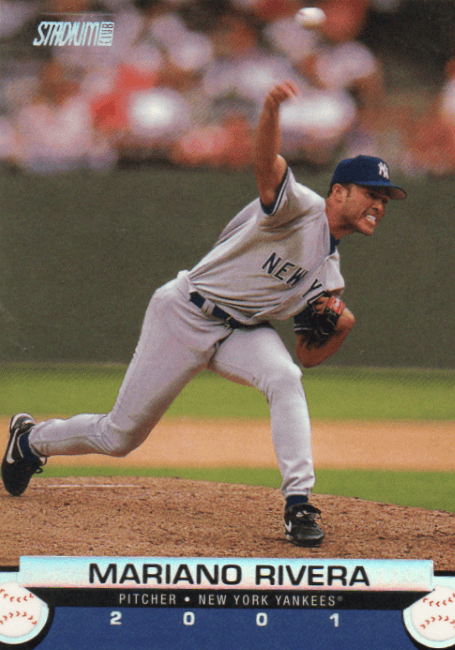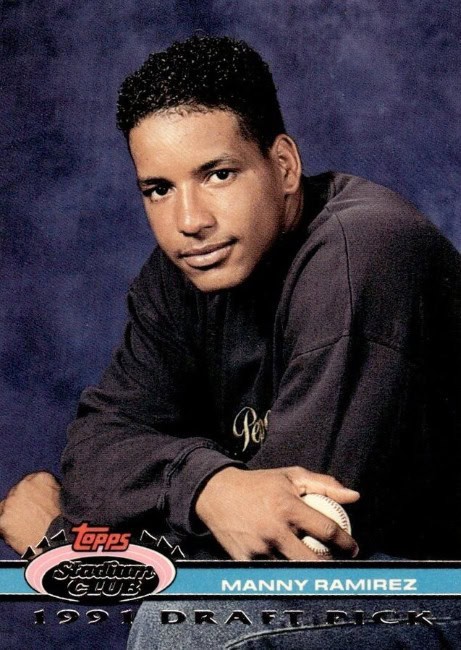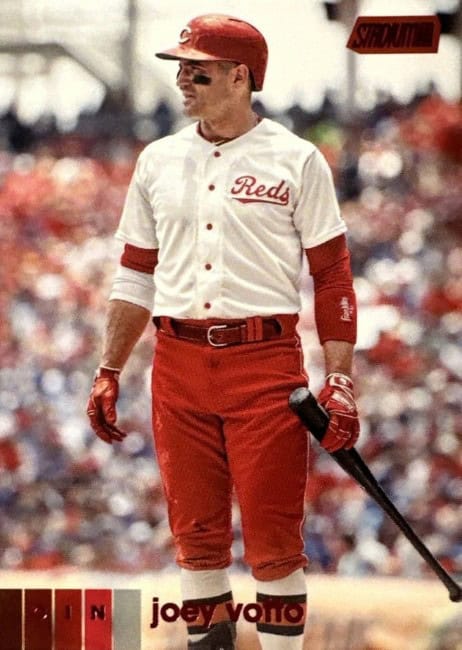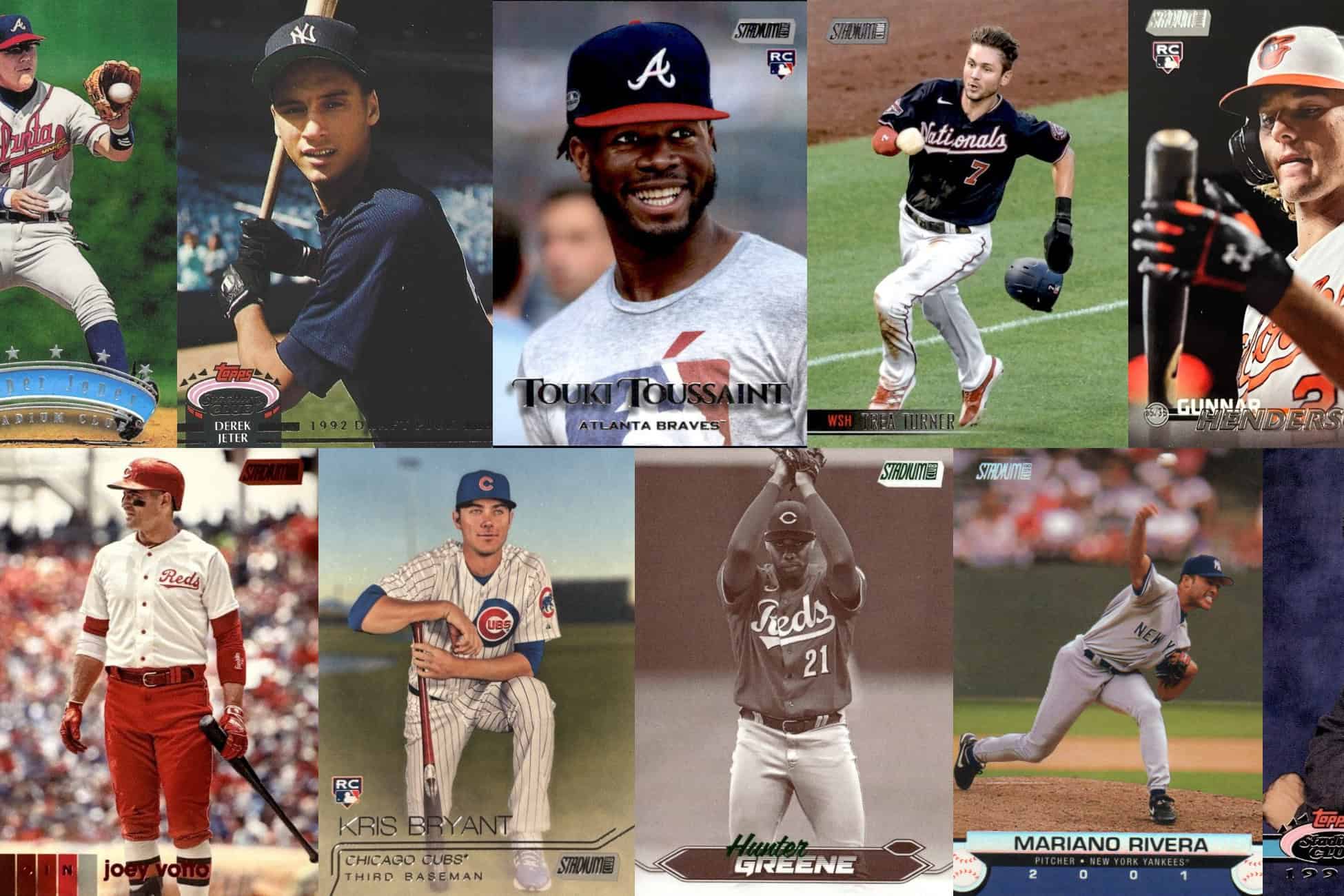In the crowded world of baseball card collecting, where value, scarcity, and flashy designs often dominate the conversation, one brand has consistently taken a different approach – putting photography and storytelling at the forefront. When Topps introduced Stadium Club baseball cards in 1991, it wasn’t just another set – it was a statement. This was Topps’ first serious attempt to redefine what a premium baseball card could look and feel like. The result was a brand that emphasized photography over statistics, aesthetics over flash, and presentation over mass production. In doing so, Stadium Club carved out a unique place in the hobby, appealing to collectors who valued quality and authenticity over gimmicks and sheer volume.
Over the years, Stadium Club has grown into one of the most beloved and enduring brands in the hobby. While it may not always deliver the most expensive rookie cards or the flashiest inserts, its consistent commitment to visual quality and baseball authenticity has earned it a loyal following. From its Kodak-enhanced photography in the early ’90s to its modern-day Chrome spinoffs, Stadium Club has quietly shaped how collectors appreciate not just cards, but the moments behind them. This is the story of Stadium Club – where baseball cards become snapshots of the game itself.
Stadium Club Baseball Cards’ History

Topps, already a dominant force in the baseball card world for decades, was facing growing competition in the late 1980s. The arrival of Upper Deck in 1989 fundamentally changed the hobby landscape. They made collectors forget that their favorite cards were, in essence, pieces of cardboard. With their high-gloss finish, holograms, and sharp photography, Upper Deck introduced collectors to what a premium baseball card could be. Topps needed to respond, and they did so with the launch of Stadium Club.
Released in 1991, Stadium Club was Topps’ answer to the premium revolution. It came with a higher price point, superior photo quality, and a refined, borderless design. This broke from the conventional format of Topps’ flagship sets. For collectors who had grown up on matte cardboard, Stadium Club was a revelation.
1991 Launch and Early Reception

The debut set of 1991 Stadium Club baseball cards made an immediate impression. One of the most notable features was the full-bleed photography. This means the photos extended all the way to the card’s edges without the use of a border. This design gave the cards a cinematic, immersive look that had never been seen in a mainstream release. The photos themselves were enhanced by Topps’ partnership with Kodak, which helped improve image sharpness and color saturation.
The card backs were just as unique. In addition to the standard statistical information, they featured a second photograph – often a candid or action shot. At first, the backs also featured a quirky rating system that attempted to quantify a player’s abilities in categories like Power, Speed, and Defense. While that system didn’t last, the emphasis on strong visuals did.
The cards also had a UV-coated glossy finish, which gave them a premium feel in hand. All of these touches contributed to the product’s strong reception in the hobby. Collectors immediately recognized Stadium Club as something different, and the set quickly gained a following.
Ownership & Branding

Stadium Club has always been a brand under the Topps umbrella, not a separate company or spin-off. Topps, founded in 1938 and known for its first major baseball card set in 1951, retained ownership and creative control of the Stadium Club line from the beginning.
While the Stadium Club brand has remained stable, the ownership of Topps itself has changed. In 2007, Topps was acquired by Tornante Company, led by former Disney CEO Michael Eisner, along with Madison Dearborn Partners. The company went private under their leadership. Then, in 2022, Topps was acquired by Fanatics. The sports merchandising and collectibles giant had already secured future exclusive licenses for MLB trading cards. Stadium Club, along with other key Topps brands, remains in production under Fanatics’ stewardship.
Design Philosophy & Aesthetic

The defining trait of Stadium Club is its photography-first approach. Whereas other card sets often revolve around stats, team logos, and parallel color schemes, Stadium Club has always prioritized moments – capturing the emotion, motion, and storytelling elements of the sport.
Early sets in the 1990s embraced a minimalist aesthetic. Player names were kept small and unobtrusive, allowing the photographs to take center stage. Card backs told stories rather than simply listing stats. As the years went on, the line began to incorporate foil elements and other design flourishes, but the core principle of photography-driven design remained intact.
Unique angles and unexpected shots became a hallmark of the brand. You might see a player diving into the stands, laughing with teammates, or caught mid-celebration. These weren’t just photos of athletes – they were photos of human beings engaged in the sport they love.
Ups & Downs Through the Years

Though Stadium Club launched to great success, the premium card market of the 1990s became increasingly crowded. Sets like Fleer Ultra, Donruss Studio, and SP (from Upper Deck) all competed for the same segment of collectors. By the late 1990s, Stadium Club was still appreciated, but it had lost some of its edge.
In 2003, the line was discontinued, a victim of oversaturation in the hobby. It returned briefly in 2008 but failed to catch on and was shelved again. Then, in 2014, Topps revived Stadium Club with a fresh focus on the photography-first concept that had made it special in the first place. Since then, it has become a consistent annual release and regained much of its original charm.
Stadium Club Members Only

Stadium Club Members Only is a special, limited-edition parallel and product line that was introduced by Topps as part of its premium Stadium Club brand, beginning in the early 1990s. Initially, “Members Only” referred to an exclusive club that collectors could join by purchasing a membership directly from Topps. Members would receive specially marked card sets, along with other perks like newsletters, merchandise offers, and advance product information. The hallmark of these cards was a subtle “Members Only” stamp or embossing, typically found in the corner of the card, which set them apart from the regular Stadium Club releases.
Because of their scarcity and limited distribution, Members Only cards can be more desirable among collectors, especially for certain players or key rookie years. While the formal club aspect has faded, the “Members Only” parallel continues to be used occasionally in modern Stadium Club releases, now functioning primarily as a rare chase insert that harkens back to the brand’s early-’90s premium roots.
Key Rookie Cards

While Stadium Club cards are not generally the most valuable rookies in a player’s portfolio, there are notable highlights:
- 1991 Stadium Club “Members Only” Jeff Bagwell #11 (RC)
- 1992 Stadium Club Dome Manny Ramirez #146 (RC) (complete with a classic 90s studio pose)
- 2015 Stadium Club Kris Bryant #300
One of the most famous Stadium Club baseball cards isn’t from the base set at all. The 1993 Derek Jeter “Murphy” card was part of a limited-run promo set (known as “Murphy”) distributed in special boxes. Because it was one of Jeter’s earliest cards and has Stadium Club’s typically-great photography, it’s a popular card.
More recent years have seen Stadium Club rookies for players like Shohei Ohtani (2018), Vladimir Guerrero Jr. (2019), and Julio Rodríguez (2022). They may not always command the top dollar compared to their Chrome or flagship counterparts, but they’re often considered some of the best-looking rookie cards in the hobby.
Modern Stadium Club Cards

In today’s hobby landscape, Stadium Club occupies a very specific niche. It is not the go-to set for those chasing hits or high-value rookies, but rather for collectors who appreciate the visual storytelling of baseball. Each card is a snapshot – sometimes literally – of the game’s personalities and drama.
Autographs are included in modern releases, often on-card, and they’re usually reserved for hobby boxes. Parallels like red foil, black foil, and photographer’s proof offer some rarity, but the real appeal is in the base set. It’s one of the few products where people actually build complete sets, just to enjoy the photography from card 1 to 300.
Stadium Club Chrome has brought in new collectors, especially those who prefer modern card aesthetics, but even there the focus remains on photography. The Chrome versions add shimmer and flash, but they don’t take away from the spirit of the set.
Reception & Collector Sentiment

Stadium Club continues to be well-regarded in the collecting community. Many collectors cite it as one of the few sets they look forward to every year. While it doesn’t generate the same hype as Chrome or Bowman, it delivers a consistent product with timeless appeal.
That said, the line has not been without its issues. In recent years, especially during the pandemic, Stadium Club releases were affected by printing delays, quality control problems, and distribution hiccups. Some hobbyists have noted chipped edges, off-centering, or delayed retail availability. Despite this, the brand has maintained a loyal base of collectors. They view its imperfections as minor compared to the joy of opening a box filled with beautiful baseball photography.
The Future of Stadium Club Baseball Cards

Since Fanatics acquired Topps in 2022, there has been speculation about how the Stadium Club brand would evolve. So far, Fanatics appears to understand the value of the product and has left its format largely intact. While the company is clearly focused on expanding digital and high-end collectibles, it has not abandoned heritage lines like Stadium Club.
This is a good sign for traditional collectors, who value the tactile, photographic nature of the set. As Fanatics seeks to grow the hobby, maintaining diversity in product style – like keeping Stadium Club’s low-hit, high-aesthetic approach – is crucial.
Conclusion
Stadium Club is not just another card set – it’s a philosophy. It treats the baseball card as more than just a vehicle for stats or investment. Each card is a piece of visual storytelling, a freeze-frame of baseball’s drama, joy, and humanity. For those who fell in love with the game through the crack of the bat or the grit of an infield slide, Stadium Club offers an intimate way to hold those moments in your hand.
Even in a hobby increasingly dominated by flashy inserts, numbered parallels, and high-dollar rookies, Stadium Club endures. It stands as a quiet reminder of what makes collecting beautiful in the first place.

